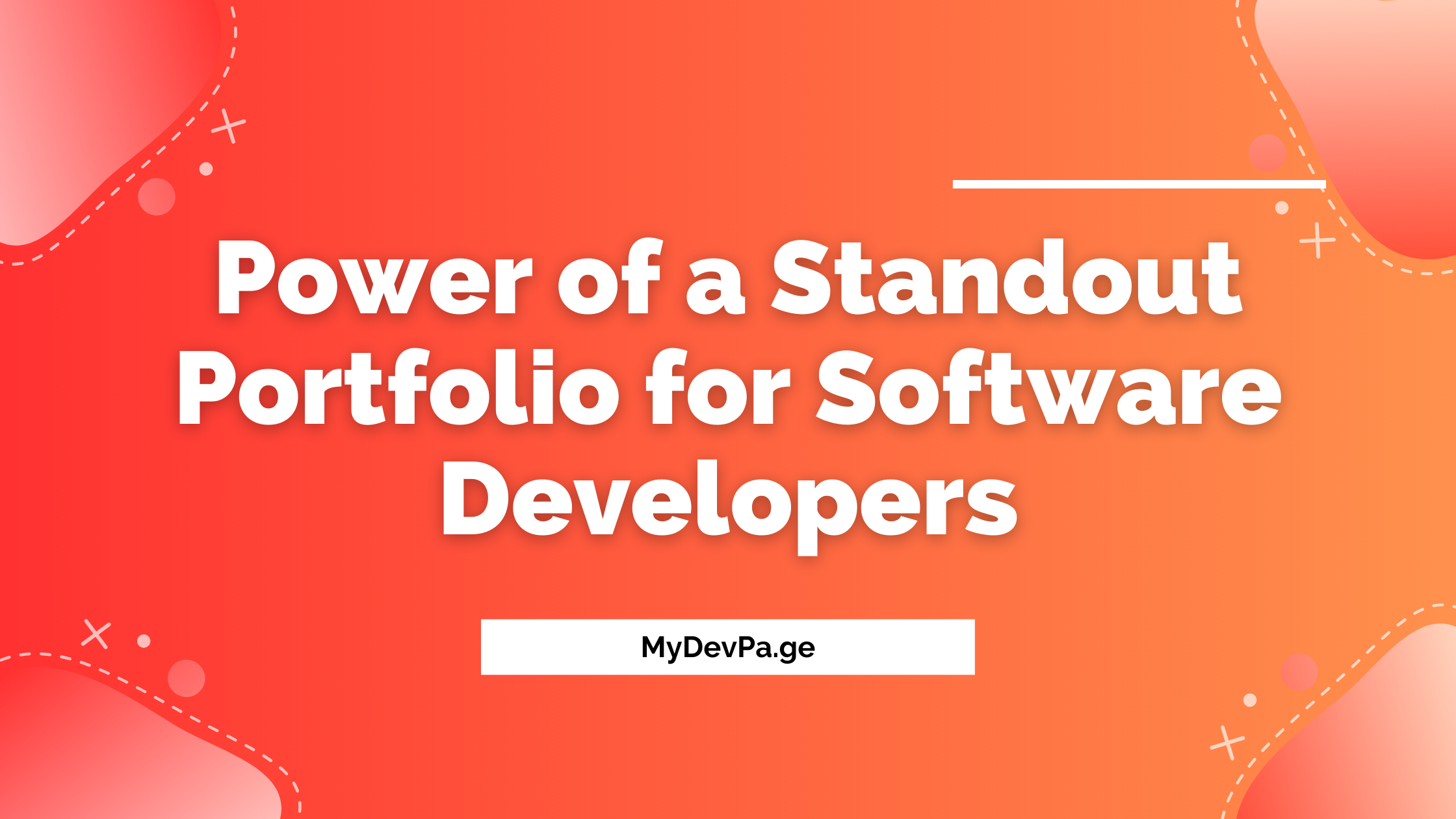The Power of a Standout Portfolio for Software Developers
 Shahmir Faisal
Shahmir Faisal
In the fast-paced world of software development, where competition is fierce and innovation is key, having a standout portfolio is not just an advantage—it's a necessity. Your portfolio is more than a collection of projects; it's a visual narrative that can leave a lasting impression on potential employers, collaborators, and clients. Here's how you can make your portfolio compelling and truly stand out:
Crafting a Visual Narrative
Homepage Design
Eye-catching Introduction: Capture attention with a visually appealing homepage that provides a snapshot of your skills and experience.
Testimonials: Consider featuring brief testimonials or endorsements from colleagues, clients, or mentors to build credibility.
Technology Highlights
Skill Cloud: Showcase your proficiency in key technologies through an engaging visual representation, such as a skill cloud or tag cloud.
Achievement Showcase: Highlight notable achievements and milestones prominently on your homepage.
Visual Appeal
Interactive Elements: Incorporate interactive elements, such as animations or dynamic graphics, to enhance visual appeal and user engagement.
Portfolio Timeline: Create a visual timeline showcasing the evolution of your skills and major projects over time.
Showcasing Diverse Projects
Versatility is Key
Project Categories: Organize your projects into categories, highlighting diverse skills and areas of expertise.
Impact Metrics: Include quantifiable metrics showcasing the impact of your projects, such as improved efficiency or increased user engagement.
Provide Context
Problem-Solution Overview: Clearly articulate the problem each project aimed to solve and how your solution addressed it.
User Stories: Integrate user stories or testimonials to provide a human perspective on the impact of your work.
Project Challenges Blog: Dedicate a section to blog about the challenges faced in various projects and the innovative solutions implemented.
Visuals Matter
Interactive Demos: If applicable, include interactive demos or walkthroughs to allow visitors to experience your projects firsthand.
Before-and-After Visuals: Include visuals illustrating the challenges faced, emphasizing the transformation achieved through your solutions.
Highlighting Problem-Solving Skills
Core of Development
Scenario-Based Solutions: Describe real-world scenarios where your problem-solving skills made a significant impact.
Interactive Challenges: Integrate coding challenges or puzzles that demonstrate your approach to problem-solving.
Problem-Solving Blog Series: Develop a blog series focusing on different aspects of problem-solving in software development.
Discuss Challenges
Technical Deep Dives: Provide in-depth technical analyses of specific challenges encountered in your projects and the innovative solutions devised.
Lessons Learned Section: Dedicate a section to reflect on lessons learned from challenges and how they shaped your growth.
Case Studies
In-Depth Analysis: Expand on specific projects with comprehensive case studies, detailing decision-making processes, challenges, and iterative improvements.
Problem-Solving Frameworks: Illustrate the frameworks or methodologies you employ when tackling complex problems.
Providing Code Samples
Transparency Through Code
GitHub Integration: Showcase your commitment to transparency by seamlessly integrating links to your GitHub repositories or specific code samples.
Coding Style Guide: Provide a coding style guide within your portfolio, showcasing your commitment to clean and maintainable code.
Organized Code
Code Documentation: Emphasize well-documented code with comments, explaining key sections and providing insights into your coding practices.
Interactive Code Demos: Embed interactive code demos to allow visitors to explore your coding skills in real-time.
GitHub Contributions
Open Source Involvement: If relevant, highlight your contributions to open-source projects, demonstrating collaboration and community engagement.
Code Review Highlights: Showcase instances where you contributed to or received positive feedback on code reviews.
Incorporating Feedback and Iteration
Dynamic Portfolio
Evolution Timeline: Showcase the evolution of your skills and projects over time, emphasizing continuous learning and improvement.
Feedback Integration: Feature instances where you received feedback and how you incorporated it into your work, demonstrating adaptability.
Show Growth
Learning Journey Blog: Include a blog section discussing your learning journey, documenting challenges faced, and lessons learned.
Continuous Improvement Metrics: Highlight metrics that demonstrate your commitment to continuous improvement, such as certifications, courses, or new skills acquired.
Conclusion
In conclusion, a standout portfolio is not merely a compilation of projects; it's a holistic representation of your skills, problem-solving prowess, and growth as a developer. By incorporating testimonials, interactive elements, diverse project displays, and transparent code samples, you transform your portfolio into a compelling narrative that resonates with potential employers.
MyDevPage: Create a Portfolio Website Instantly
MyDevPage allows you to build a portfolio website in minutes. Focus on building great projects and enhancing your skills rather than wasting your time building a portfolio website from scratch or customizing expensive templates.
MyDevPage handles everything:
Portfolio Creation
SEO
Analytics
Customization
Custom Domain
Contact Form

Subscribe to my newsletter
Read articles from Shahmir Faisal directly inside your inbox. Subscribe to the newsletter, and don't miss out.
Written by

Shahmir Faisal
Shahmir Faisal
Developer with a love for web technologies. Building things with react, next and node.